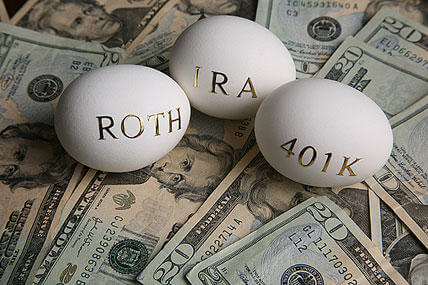As a financial planner, I've told countless folks there's no silver bullet to fix their financial ailments. But the Roth Thrift Savings Plan introduced this year could be a cure to one of my recurring headaches.
You see, every time I see the percentage of military servicemembers who don't take advantage of the TSP, I start to develop one of those skull knockers. I'm hoping the arrival of the Roth TSP will send those participation numbers into the stratosphere. You may not realize it yet, but this could be an exciting new addition to your retirement toolkit.
In fact, it could be a compelling reason to start saving, or saving more, for retirement.
For those reading "TSP" and asking, "TSP who?" I'll start with a quick refresher. The TSP is the Federal Government's version of a 401(k) available to Federal employees and members of the uniformed services. It allows military members, through payroll deduction, to invest money for retirement. Contributions to the original, traditional version of the plan are made on a pretax basis (your contributions reduce the amount of income upon which you are taxed), grow tax deferred and withdrawals are taxed as ordinary income in retirement.
All active-duty members of the Army, Navy and Air Force became eligible to contribute to the Roth TSP on Oct. 1. Active-duty Marines, Coast Guard, reservists and Defense Department civilians became eligible for the Roth TSP this summer.
What's so exciting about a Roth TSP is it allows you the potential to create a tax-free stream of income in retirement. In my mind, tax and free are two very cool words -- when said in one breath. Unlike the original TSP, contributions to the Roth version do not reduce your tax bill now. However, those contributions and all of their earnings over the years will potentially be available to you tax free once you're 59½ and have had the account for at least five years.
Not excited yet? Here are four good reasons to get you so fired up about "tax free" that you'll visit myPay and sign up or fill out the Form TSP-U-1 to get things going:
- Tax-free could get better with time. I don't have a crystal ball, but if your personal tax rate increases over the years, saving money tax-free could be even more exciting in the future than it is today. If you crunch the numbers, going the Roth route makes sense for those who anticipate paying higher taxes in the future than they do today. For those just starting out who will see their income skyrocket in the future, or those who just expect across-the-board tax rates to do the same, the Roth TSP may be just what the doctor ordered.
- Never pay taxes. Combat zone contributions to the new Roth TSP and all their earnings offer the potential to accumulate a big chunk of money on which you'll never pay taxes -- without breaking the law! In 2012, you can invest up to $17,000 into the Roth TSP ($22,500 if age 50 or older). Whether you invest $7,000 or $17,000, never paying taxes is a sweet deal. In a combat zone, once you reach that Roth limit you could switch to the Traditional TSP and contribute up to a total of $50,000. Of course, the earnings on contributions to the Traditional TSP would be taxable.
- Own ALL of your retirement. Hey, I'm a big proponent of the original TSP, traditional IRAs and 401(k)s. But the reality with all of them is that once you get to retirement, Uncle Sam has his hand out. Your withdrawals from these plans will all be taxed as ordinary income; in essence, part of your retirement savings won't belong to you. That's not the case with the Roth.
- That's a big pile of tax-free. How much tax benefit are we talking about here? Let's look at an example of an E-6 with eight years of service. If he starts saving today in the Roth TSP by contributing 3 percent of base pay, his monthly investment would be less than $100. With each pay raise, he bumps the contribution up by one percentage point. When promotions to E-7 and E-8 happen, he directs a third of the pay increase into the Roth TSP, leaving two-thirds to improve quality of life. After 22 years of service, he retires and launches his second career, leaving the TSP alone to grow for his next retirement. At age 60, assuming a hypothetical 6 percent growth rate and not including anything he accumulated in his second career, he'll have more than $500,000 available, potentially tax-free. And it's all because he got the ball rolling with a relatively small monthly investment and kept it going by bumping up his contribution with each pay raise or promotion.
Are you feeling it? Call it a headache cure -- for you and me. The Roth TSP is here, so if you're in the military, consider signing up and taking control of your financial future.




